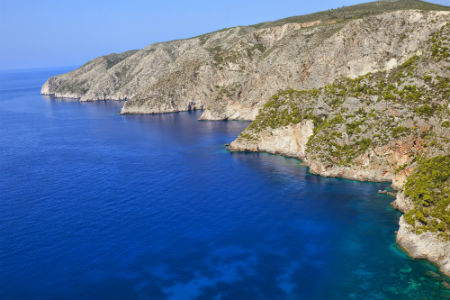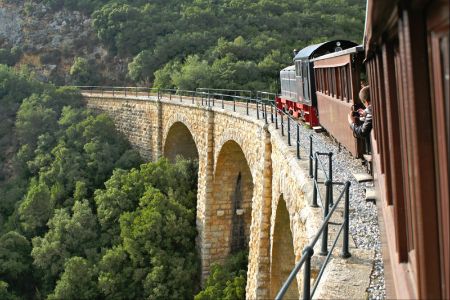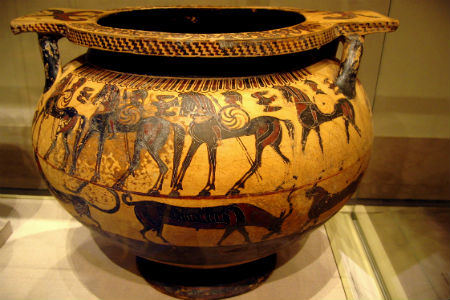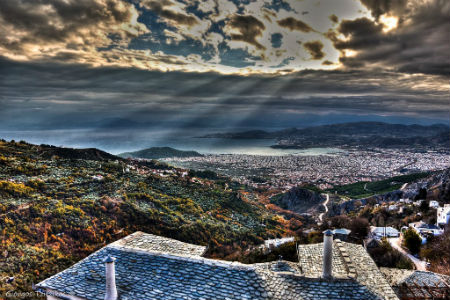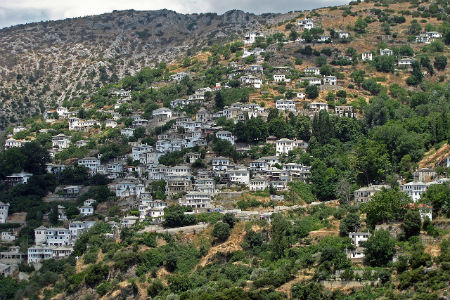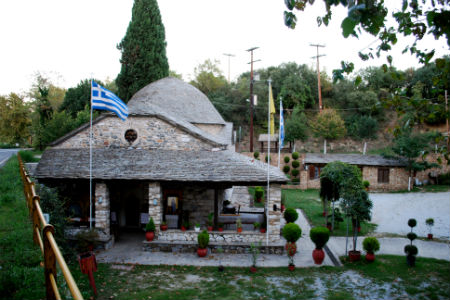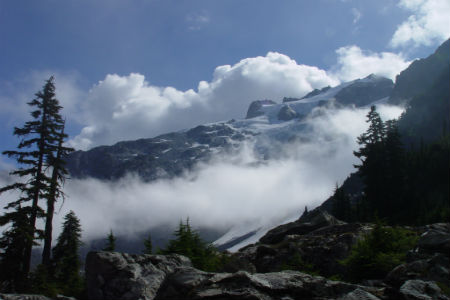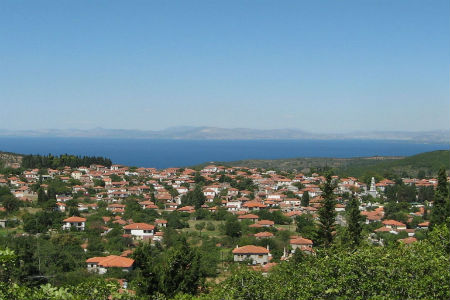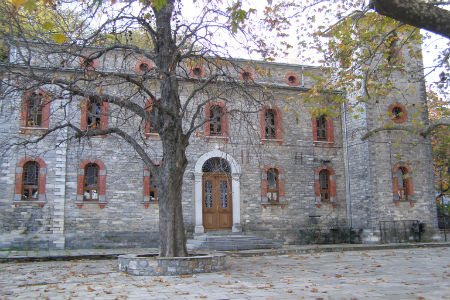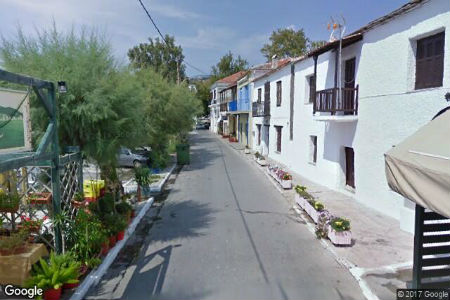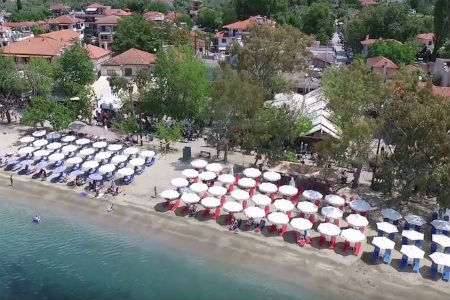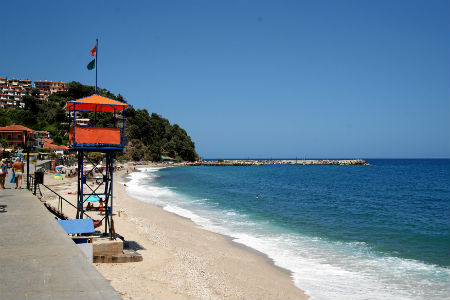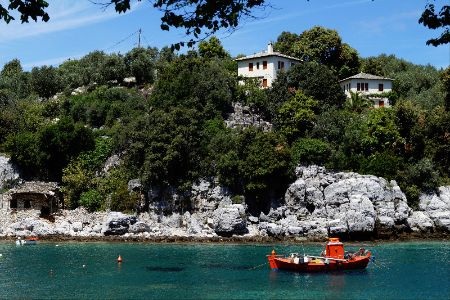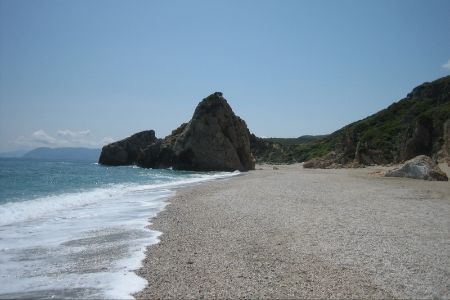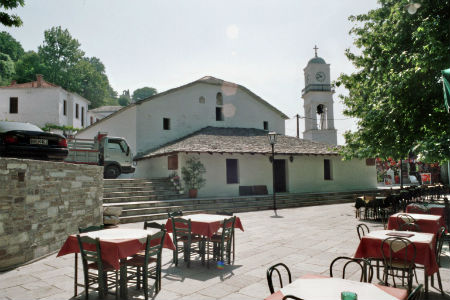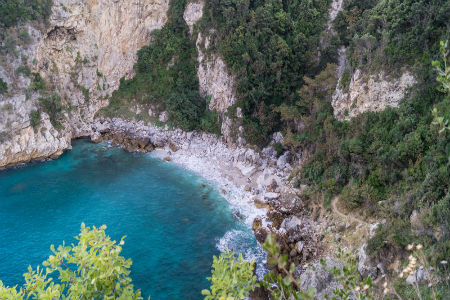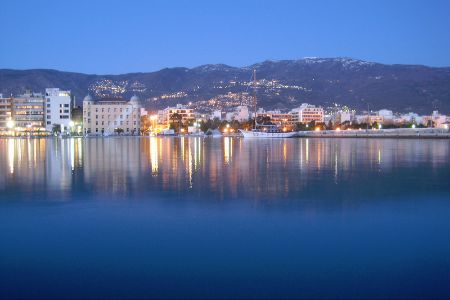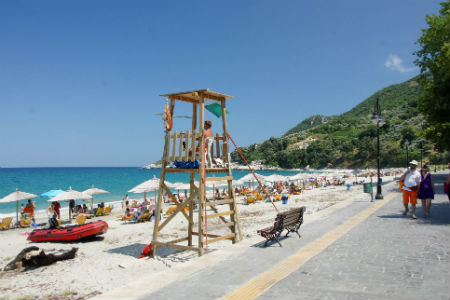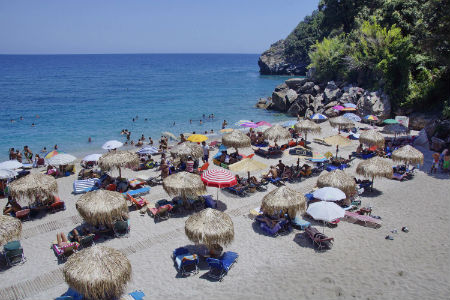Pelion
Discover the land of the Centaurs!
Explore the beautiful countryside, discover traditional fishing and hill villages, taste authentic Greek cuisine, swim in crystal clear sea, relax on deserted beaches.
Pelion is known as the Tuscany of Greece. Always green and verdant, Mount Pelion and the surrounding forests and orchards make a wonderful backdrop for walking.
Combining beautiful villages, guesthouses in historic mansions and mountain resorts, beautiful nature, and beaches, exquisite regional cuisine and tsipouro, the Centauri Mountain is not by chance one of the most popular destinations in Greece for all seasons. The nearby villages of Volos, northwest of Pelion, Portaria, and Makrinitsa, are among the most cosmopolitan and touristically developed. Milies, Pinakates and Vizitsa are still points of reference thanks to their unique mansions, many of which have become guesthouses, their most unknown neighbors apart, such as Agios Lavrentios and Agios Georgios Nilias are constantly claiming the most sophisticated travelers, while the rising east Pelion with Tsagarada center attracts as a magnet the nature lovers, as it offers for walks and activities in nature. Southern Pelion, with its beautiful beaches and picturesque settlements like Trikeri, comes alive mainly in the summer and has its own special character.
Pelion is steeped in history, and renowned for its natural beauty.
The Olympic Gods chose Pelion for their summer holidays.
The Pelion Peninsula
The Pelion region is a mountainous peninsula on the Eastern coast of mainland Greece, north of Athens. The Eastern coast shelves deeply into the Aegean Sea, with spectacular cliffs and gorgeous beaches. The Western coast slopes more gently into the Pagasitic Gulf, with thin pebbly beaches. There is also a major north-south variation in terrain – with the Northern region consisting of the mountain, covered in woodland with narrow winding roads and deep gorges; the Southern region is gentle hills covered in olive groves with faster, more direct roads.
All the resorts in the Pelion region are fairly small, with the smaller resorts with only a couple of taverns. The ‘larger’ resorts, such as Affisos and Agios Ioannis have about a dozen tavernas and more local facilities. The Pelion is not busy, nor is it a holiday resort for nightlife – it is quiet and not at all commercialized. However, in high season (August), it is a popular holiday area for the Greeks, and I am told can get extremely busy, with a one-way traffic system being introduced in Agios Ioannis!
The towns and villages of the mountainous North are well known for their stone tiled rooves, and the Southern Pelion is more typically Greek terracotta and white houses. Agios Ioannis was our base for our two week holiday, boasting a choice of 3 beaches, fairly wide choice of a dozen or so tavernas, bars, 3 small supermarkets, bakery and a couple of tourist offices. We stayed at the Southern end of the resort in the ‘Karoulanis Beach’ – a fairly new apartment block on the edge of Papa Nero beach and a short walk from the town tavernas. Agios Ioannis was our ideal resort with a good choice of places to eat followed by a gentle promenade along the front up to the harbor every evening. It is also only a 20-minute walk south to the nearby village of Damouchari (pronounced dam-oo-her-ee), where there are a couple of harbourside tavernas, a good pebble/snorkeling beach, and several apartments. Although in the heat of the day the steep donkey track path can be exhausting for the first half, the view back across Papa Nero makes it worth it.
Pelion landscape
The Pelion Peninsula is only 80 kilometers long and 35 wide but has a remarkably varied landscape. To the north, Mount Pelion rises up to 1600 meters with the ski resort of Hania at its peak. Looking out over both the Aegean Sea and the Pagasitic Gulf, the mountain scenery is alpine; wild and rugged, with pine forests and clear mountain streams.
The east coast is rocky and remote, with small villages clinging to the steep slopes, overlooking the Aegean Sea. The land is forested with chestnut and beech.
The west coast of the Pagasitic Gulf, with its burnt umber soil and cypress, lemon and eucalyptus trees, has a Tuscan flavor. The hillsides are abundant with olive groves. The turquoise water of the Gulf is calm, safe and crystal clear.
Homeland of Argonauts
The rich vegetation of Pelion composes a mythical landscape, a fact recognized from ancient times. Here were the titans and the sacred cave of the ” Zeus”. In this cave, people ascended, to ask Zeus to send rain on the warmest day of the year. In the dense forests of Pelion inhabited the centaurs, the most famous among them Chiron. Some of their students were Hercules, Achilles, Jason, and Asklepios. Asclepius was the god of medicine.
He created the symbol of the snake, which had some therapeutic significance and laid the foundations of Medical Science. With wood from the forests of Pelion, the Argonauts also built the site dedicated to Poseidon ‘Argo’, and they began to discover the way to the unknown countries spreading Hellenism.
The green mountain of Pelion has been inhabited for many years. The 24 villages of Pelion began to take their present form and to experience bloom during the Ottoman domination. Then, many residents of the surrounding areas, in an effort to escape the suffocating slavery, fled to the mountain of Pelion. Special privileges have been granted to these villages and they have been able to organize themselves very well, create crafts and businesses and experience prosperity and economic growth. This was because the area of Pelion belonged to the mother of Sultan Valide-Hanum and had autonomy. They were divided into the “foundations” of Argalasti and Makrinitsa and the “hacias”, which were governed by the Pasha of Larissa. Their economic growth has reached such a sign that they export products abroad. Whole caravans of mules, mainly with textiles and shoes, began from the villages of Pelion to the Black Sea, the Eastern Mediterranean, Vienna and other European capitals. Along with the economic boom, many schools and libraries have been established. Many intellectuals of the time sought shelter in Pelion, which at that time enjoyed a status of relative freedom. The great teacher, Rigas Feraios, was first taught in Zagora, Pelion. All this contributed to the creation of the rich tradition of Pelion, both in the arts and the letters, as well as in the customs, a tradition that remains alive and can be experienced by someone when they ascend to the slopes of Pelion.
Pelion tour
Pelion is not well known outside Greece. The lack of mass tourist facilities means that few charter companies service the area. This makes the travel options to Pelion more limited but makes it wonderfully unspoiled once you get here. The beaches are peaceful. Strict licensing prevents jet skis and banana boats from whizzing around the bays.
Getting to Pelion
By far the easiest way to get to Pelion is to fly into Volos airport; from there it is just an hour and a half in your private taxi to South Pelion, or if you are driving, you can pick up your car at the airport. If you are flying into Skiathos, there are regular catamaran departures to Volos, a journey of only 1 hour 25 minutes. From Volos, you can pick up your car, or be driven straight to your House.
All the arrangements will be made in advance and your prepaid tickets will be waiting for you at the offices of the hydrofoil company. A car can also be delivered to you at the bus or railway station in Volos, and you can, of course, collect and return a car at both Athens and Thessaloniki airports.
If you are flying into either Athens or Thessaloniki, an alternative to hiring a car is to take one of the frequent public buses to Volos. You will then be met at the bus station in Volos, and driven straight to your House, or you can pick up your car at the bus station. Should you decide to use the public bus service, we will send you full details of the times and schedules and a note (in Greek) asking the airport taxi-driver to take you to the appropriate bus station. Finally, we will be very happy to arrange to meet you from your flight and drive you directly to your apartment or a hotel.
Getting around
We strongly recommend that you hire a car or a boat for at least part of your holiday. Note, however, that a boat can only be delivered for a minimum rental of one week.
Buses and Taxis. If you are staying in Horton or Milina, it is quite possible to manage without a car. From here there are daily bus connections to Volos, and to Lafkos, Promiri and Platania.
Riding. If you ride, or even if you have never done so before, Nikos of Kentavros Farm in Arghalasti will be delighted to show you the local countryside from the saddle of one of his friendly, well-mannered horses. Rides can take from a couple of hours up to a full day, and on all but the shortest beginners routes you will ride down to one of the beautiful, nearby beaches where you can, if you wish, swim with your horse.
Boat Hire. By far the best way of exploring the islands and the coastline up and down from Milina is by boat, and if you are staying at a house like Cleopatra’s or Lena’s in Lefokastron, or at Eleni’s outside Milina.
Excursions by Taxi. You can visit some of the mountain villages to see the traditional architecture, or you can simply visit some of the spectacular beaches on the east coast of the peninsula. These trips are for either a half, or a full day, and we can also arrange excursions further afield to Meteora and Delphi.
Insurance. Most travellers are anxious to insure against any possible upset to their arrangements, and so we have arranged a group scheme which offers you comprehensive cover at a very reasonable cost. This cover is mandatory, unless you already have a policy giving you protection equal to or better than our own.
Cycling in Pelion
Pelion is great cycling country! Mountain bikes are the perfect way to explore the countryside. Donkey tracks and footpaths crisscross the whole of Pelion, leading you through empty valleys and over mountain tops to deserted beaches. Keen cyclists can tackle Mount Pelion, 1600 meters above sea level, with outstanding views to the Aegean and the Pagasitic Gulf.
Road Conditions for Cycling
Main roads around Pelion are paved (asphalt), cobbled or cemented. The roads are small, with a single lane in each direction. Traffic is light. Back roads, leading to small villages and beaches, are dirt tracks. A network of donkey tracks also crisscross the hillsides and orchards.
Bicycle hire
There is no bicycle hire facility in Pelion. Most cyclists prefer their own bicycles. Bring your own bike on the plane and we’ll transfer you if you are booked on one of our holiday packages!
What to Bring Cycling
Your bicycle.
Sunglasses.
A sunhat.
A gel seat. If you are planning long days out and are not a hardened cyclist you will feel it.
Sun cream.
A small rucksack to carry all your stuff.
Mobile phone. If you get lost you can call for directions.
If you are a serious biker, then bring comfortable cycle clothes.
Some Suggested Itineraries
There are a great many lovely routes to explore, a sample of which are listed below. Let us know your requirements when you rent your bike and we’ll help you to work out some personalized routes for your enjoyment.
Hondri Ammos
This route takes you through olive orchards and remote valleys to the south coast. There are two deserted beaches to explore, with views south towards Evia and the islands.
Lafkos, Metochi, Horto, and Milina
This route takes you up a long, winding climb to Lafkos village, perched 300 meters above sea level. It then follows the hilltops to Metochi. The descent to Horto is along a dirt track through woods and orchards.
Marathias
This route takes you along the coast road to the turquoise waters of Marathias beach, and the convent of Tzasteni. The route home takes you through hidden valleys via the dirt tracks.
Health and Insurance
Sports can be dangerous, both for beginners and experts. Please ensure you have sufficient travel insurance cover for taking part in sports and bring your European Health Insurance card in case you need medical attention.
European Health Insurance Card. This replaced the E111 form. If you need any medical assistance whilst in Europe this card entitles you to free or reduced cost health care. You may still have to pay for prescriptions and medicines.
Travel insurance.
Not all travel insurance policies cover you for sports activities. Please check your policy details and make sure you have sufficient cover for any activities you wish to undertake.
Winter Holiday
Out of season, Pelion is wonderfully quiet and relaxing…
Sightseeing in Pelion
Pelion is a wonderful place for swimming, sunbathing and relaxation. Many of our clients have found it particularly relaxing because it reminds them of the Greece of the sixties and seventies when tourism had just begun to develop and they would get the sense of life going on in tune with nature. Sitting at a restaurant for ages without feeling pushed to leave because somebody else wants your table; women returning home with their goats and stopping to chat to their friends; the irrigation channels flowing early in the morning to water the summer gardens and many other small aspects of village life that help one to wind down. On the other hand, there is a choice of food, entertainment, and activities to make the area appealing to those who would like to get out and about…
The peninsula is crisscrossed with cobbled donkey-tracks, until recently the only means of getting from one place to another. These now make perfect routes for walkers and riders, and so if you enjoy walking we will be very happy to give you directions for finding and following the paths near to your accommodation. For those who enjoy horseback riding, there is a well-run stable in Arghalasti, and if you are looking for instant relaxation there is massage, Shiatsu, and aromatherapy available in Milina. Last but not least, boats for up to four adults, kayaks and sailing dinghies can be hired.
The mountain villages are fascinating, and there are many marvelous swimming places right off the beaten track.
Argalasti
A vibrant big village built in a strategic position, facing the Aegean Sea and the Pagasitic Gulf, adorned with Pelion mansions and beautiful houses with flowered courtyards, paved cobbled streets, impressive historic buildings and churches and beautiful arched bridges (Katsilochori stands out at the entrance of the village).
Visitsa
Among the most famous and traditional villages of Pelion, Vyzitsa gathers all the elements that make up the original Pelion landscape. The restored mansions (many have been converted into guesthouses), the traditional Pelion houses, the stone fountains and the lush vegetation inside the settlement make a setting ideal for holidays all year round.
Makrinitsa
The famous village of Makrinitsa has preserved its traditional architectural elements and today it is one of the most characteristic examples of Pelion architecture, with its beautiful mansions, stone houses, cobblestone streets and stone bridges. Makrinitsa is known – and rightly – as the “balcony of Pelion”, since it offers an unobstructed view of Pagasitikos and the city of Volos. The tourist infrastructure of the village covers every wish: there are traditional guest houses housed in Pelion mansions, small hotels, taverns with local tastes, cafes and bars.
Portaria
One of the most popular villages of Pelion and the whole country, Portaria combines the atmosphere of the original Pelion village and the unforgettable views of the city of Volos and Pagasitikos with its intense tourist development. Its guests choose it for holidays all months of the year, with a peak season in winter. Its picturesqueness, natural beauty and close proximity both from the ski center of Pelion and the sea make it an ideal destination and base for excursions all over Pelion. Luxury hotels, traditional guesthouses, rooms to let, restaurants and taverns (from the best in Pelion), cafes, bars and souvenir shops and folk art make up a complete tourist destination for all tastes.
Afissos
Surrounded by the beautiful coasts of Pagasitikos and surrounded by lush nature, the seaside village of Afissos is a lively summer resort that lasts all year round with new hotels as it is within easy reach of some of the most popular villages in the area.
Zagora
Zagora is ideal for those who love traditional colors, slow rhythms and walks. One of the most popular routes is the one that starts from the square of Agios Georgios and through a green path leads to the beach of Horefto. The settlement is divided into four districts, Agia Paraskevi or Perachora, Agia Kyriaki, Agios Georgios and Sotiras, amphitheatrically perched on the mountainside, with a splendid view of the Aegean Sea. Churches, stone bridges and springs with running waters give beautiful images to the visitor. Taverns with traditional cuisine, café and bar are scattered in the village.
Milies
Milies is one of the most picturesque villages of the mountain of the Centaurs, the starting point of the famous “Moutzouris”, the small train that arrives through a beautiful route to Ano Lechonia. An old village with a long history, with the famous Milies School being a center of the liberation struggle of 1821 and the spiritual home of the time.
Tsangarada
The famous village of Pelion achieves the ultimate combination of mountain and sea. Built amphitheatrically on a verdant slope, it offers unique views of the Aegean Sea and is surrounded by beautiful beaches, bays, and coves. It has always been the village of artists and sophists, while the hotels, hostels and famous taverns have made Tsagarada one of the most popular villages in the area. Beautiful mansions, traditional neoclassical and stone-built cobblestone streets, flowered courtyards, ancient plane trees, and chestnuts create an ideal backdrop for relaxation.
Things to do
Enjoy the water! Dinghy sail or potter around the local coves on a kayak. Take a picnic to a deserted beach. Swim. Snorkel. Go dolphin spotting. Enjoy nature! Cycle through the countryside and discover the real Greece. Go for a walk along the donkey tracks and explore the churches and village squares. Relax at a taverna or bar and take in a magnificent sunset.
Take the steam train from Ano Lechonia to Milies, a mountain village high above the Pagasitic Gulf, and enjoy the spectacular views as the train winds its way through remote gorges. Take a boat trip from Platania to the islands of Skiathos, Skopelos, and Alonissos. Spend the day shopping in Volos, and take in the museums and archeological sites.
Food
A local specialty in the shops is glace fruit in syrup, all different fruits, colors and shapes of jars. The honey is also local and can be bought either on its own or with nuts. There are also apple orchards up in the mountains, so in September/October the fruit shops are overflowing with apples, and you are often given them as a complimentary dessert in the tavernas. The bakeries too are a must – lovely fresh bread and pastries – try the ‘rocks’ which are a sweet cinnamon pastry with a chocolate center!
Pelion Weather
The weather in the Pelion region is well known locally as not conforming to the weather forecasts due to the influence of the mountains. The city of Volos is only a few kilometers away, but over the other side of the mountain can experience completely different weather!
In late September, early October, when we visited the temperature was in the low 30’s the first few days, then after an overcast and windy day, it settled in the high 20’s, with fairly warm evenings. We were lucky enough to have air-conditioning units in our apartment, and it was always 24oC at night before we switched it on. Out of high season, there are only a few sunbeds and umbrellas on the beaches, so it is advisable to have your own umbrella.
The Aegean Sea is well known for being temperamental and strong undercurrents. However, we only had 2 days when it was not flat calm, and it was ideal for snorkeling and swimming. Often if the Aegean side of the Pelion is rough, it will still be calm on the Pagasitic Gulf because of the protection from the peninsula.
As you ascend the mountain, it is also very noticeable that it gets a lot cooler. At the ski resort, it was 12 oC, and wished we had taken a sweater to wear!
The Pelion Railway
(from Ano Lehonia to Milies in the Pilion peninsula, Central Greece)
Where is the Pelion and its railway ?
The Pelion is the peninsula on the Eastern part of Central Greece, halfway between Athens and Thessaloniki. Or to put it otherwise: it is the peninsula situated at the South East of the city of Volos. The Pelion is a mountainous region, with one of the best-known ski resorts of Greece.
History of the Pilion Railway
The Pelion railway was built in the period from 1881 until 1903. The main engineer responsible for the construction was Ernesto de Chirico, father of the famous painter Giorgio de Chirico (Italian). The railway is of a very narrow gauge type: only 60 cm, which seems to be the narrowest “standard” gauge ever used for commercial passenger railways. The railway used several steam engines; among the last ones (the longest surviving) were two of Belgian origin: “Milies”, built in Tubize in 1903, and “Jason”, built in Haine St-Pierre in 1912. More information about these old engines can be found on the very interesting website of the Greek Association of the Friends of the Railway. Between WWI and WWII the railway played an important role in the economic development of the Pelion region. At the beginning of the 1970s, the railway was abandoned. The tracks were grown over by vegetation and in the urban part, they disappeared partially. Yet, in 1985, the railway was recognized as a historical monument and preservation work began.
The Pelion Railway line
Until its closure in 1971, the Pelion railway line connected the region’s capital city of Volos to the picturesque Pelion village of Milies. The length of the entire line was 28 kilometers. In 1996 the part of the line between Milies and Ano Lehonia has been re-opened as a tourist railway line operating on Saturdays and Sundays only. It is not very clear what will happen to the rest of the line. However, there are indications that at least the part Agria – Ano Lehonia may be re-opened in the not too distant future.
Volos - Agria
In the western part of Volos, there is an OSE railway station where about 14 trains per day leave, mostly to Larissa, which is the nearest other important cities, northeast of Volos. There are also a few direct trains per day to Athens and Thessaloniki. The picture on the left shows a time table valid from 24 May 1998; however, this picture was made in Volos station on 26 July 2000.
The tracks at Volos main railway station. All these trains that run today are “normal gauge” trains (1435 mm wide). In Volos station, you can still see “metric gauge” rails (1000 mm wide). However, the narrow gauge track of the Pilion line (600 mm wide) never came to the main Volos railway station. The Pelion line started from the eastern part of the city. Within the urban area, we found a few pieces of 600 mm track, mostly covered with asphalt. Unfortunately, we have no picture of this.
From the eastern outskirts of Volos until the village of Agria, the old rails are well visible: they are situated on the few meters between the main road and the sea, and at many places, they are used as a parking lot. Unfortunately, we have no picture of this.
Agria - Ano Lehonia
From the village of Agria, the railway line leaves the coastline. Soon you find the Agria station. Although the Pilion railway now only operates between Ano Lehonia and Milies, the building of the old station in Agria has been completely renovated Platform behind the Agria station, 26 July 2000 (a sign that one day the current operation will be extended to Agria-Milies?).
The picture on the right shows what is left of the platform just behind Agria station. Strange to see this just behind a completely renovated railway station! The tracks are invisible but you can clearly see where they have been. The line seems to go straight through, right between the houses you see in the background. Space is still available so it must be possible to re-use this part of the railway. Between Agria and Ano Lehonia, the tracks are visible at certain places, but at other places, they have been covered with asphalt and are sometimes used as parking lots. Compare the two pictures on the left side, the similarity of these two railway stations is striking: above, the Agria station (pink colored, with brown doors and windows), renovated but with just wilderness behind it, and just under this text the Ano Lehonia station Ano Lehonia station, 26 July 2000 (peach colored, with green doors and windows), also renovated and with the old brown carriages just behind it. Behind Ano Lehonia station a new hangar has been built for the two new engines and the carriages.
Ano Lehonia - Ano Gatzea
A new shed has been built, which is large enough to house the two remaining steam engines, the two new diesel engines and a work train, all behind each other on the same track. The passenger carriages always stay outside.
Ano Gatzea - Milies
Ano Gatzea station is the only place where the train stops.
The little town of Kalambaka lies at the foot of the Meteora and a road from the town takes a short circular route around the monasteries perched high on the rocks. The rocks rise up to 400m above the Thessalian plain and some are riddled with caves that were originally inhabited by hermits.
The monasteries were established later from about the 14th century when there were originally about twenty-four monasteries but now only seven remain. Until the 1920s the only way to reach the monasteries was by winches or by hanging ladders from the vertical cliff faces. Since that time steps have been hewn into the rocks and bridges built to make access easier.

